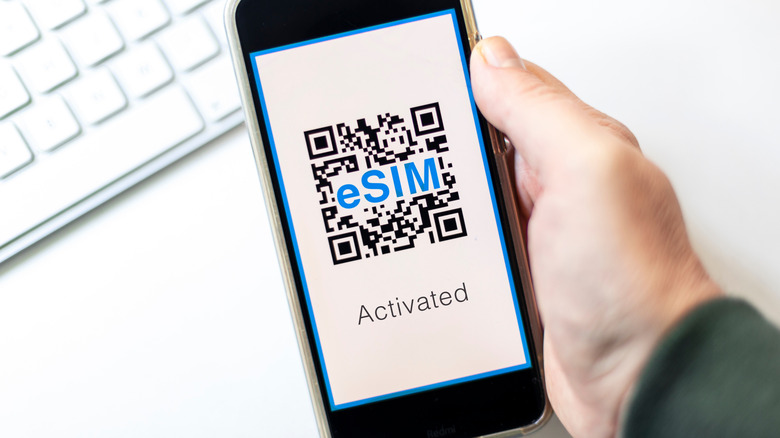Rick Steves Reveals His Tips For Using Data Roaming On Your Cell Phone Safely And Smartly
Your cell phone may work abroad, but don't assume it's free. Those roaming charges can shock you with bills far exceeding expectations. To lower your costs, travel expert Rick Steves, on his website Rick Steves' Europe, advises, "Avoid using your cellular network for bandwidth-gobbling tasks. Skyping, downloading apps, and watching YouTube all eat up megabytes and can wait until you're on Wi-Fi." Instead, exercise patience and wait for Wi-Fi connections to handle these data-heavy activities.
Many travelers underestimate their data consumption or don't realize they're using cellular data at all. To completely eliminate usage, simply disable "cellular data" or go into "airplane mode" in your phone's settings. This must-know phone tip saves you huge fees on cruises as well. If you prefer staying connected with controlled usage, Steves suggests resetting your data tracker to zero immediately upon arrival abroad. This lets you monitor data consumption in real-time. Also, check that automatic updates aren't silently draining precious data in the background.
That being said, there are times when cellular data is essential while traveling. Taken a wrong turn on a road trip? Need to locate that emergency coffee shop on a morning walk? Or does streaming Spotify feel like an absolute must? If Wi-Fi isn't always accessible in these moments, you need a solid backup that won't break the bank.
Backup options for data roaming that will save you money
Rick Steves understands the importance of data roaming in an emergency. "Using data roaming on your cellular network is handy for times when you can't find Wi-Fi," he says on his website, Rick Steves' Europe. "But while convenient, data roaming is also potentially expensive, depending on your international plan rates." It's crucial to explore your carrier's international plans before traveling. This task is even included on our Rick Steves-approved pre-travel checklist. But while these roaming packages typically cost less than default rates, they offer limited data allowances. The most budget-friendly solution? Purchasing an eSIM or physical SIM card specifically for your destination.
First, check if your phone is compatible with eSIMs. International eSIMs from companies like Airalo are significantly cheaper than traditional roaming costs and offer data plans for individual countries or entire regions like Western Europe. Most new phones are compatible with eSIMs. Physical SIM cards are sometimes cheaper, but in a digital world, they're quickly becoming obsolete. Moreover, they require visiting a local mobile store or expensive airport kiosk with your passport — a time-consuming process that eats into precious vacation hours. If you do go this route, Rick Steves recommends checking the size of the SIM before purchasing to ensure it fits your phone. Be sure to compare these options carefully against your carrier's international rates.
Both eSIMs and physical SIMs sell data-only plans or packages that include data plus a local phone number. Local numbers allow you to call local businesses easily, should you need to make a dinner reservation or get hold of hotel staff in an emergency. However, data-only plans cost less and often meet most travelers' needs. Since communication apps like WhatsApp and Signal run on data anyway, you can stay connected without traditional calling. iPhone users benefit further abroad, since Apple devices communicate with one another through data rather than cellular service.

